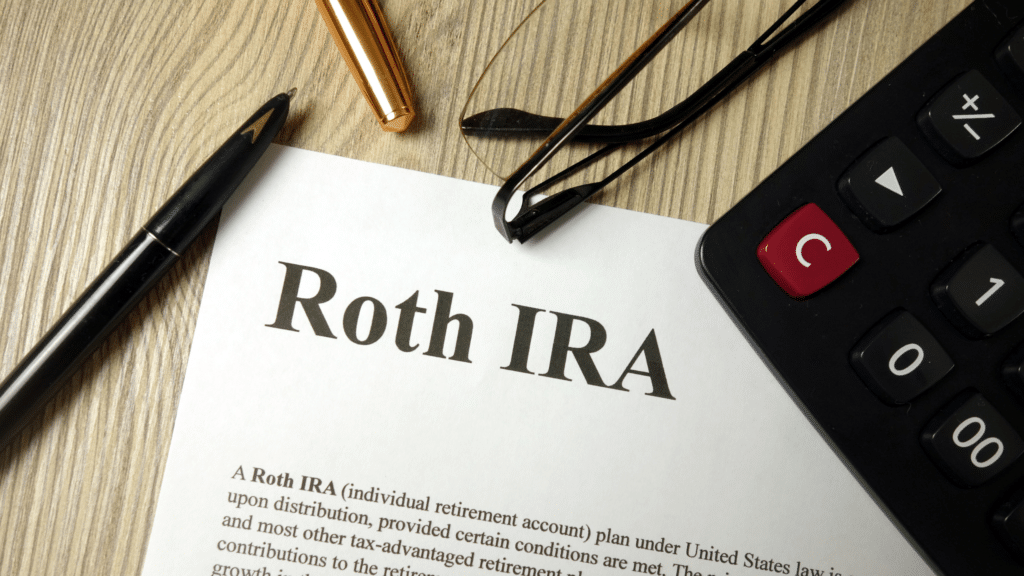By Bernie Wurts, CFP®
The idea of tax-free income is a goal for many taxpayers, and when you opt for a Roth IRA account, it becomes a tangible reality. Roth retirement savings options are the youngsters in the world of finance; the Roth IRA, named in honor of the late Delaware Sen. William Roth, made its debut in 1998, followed by the Roth 401(k) in 2006.
Creating a tax-free income stream is a potent tool when it comes to retirement planning. While these accounts offer significant advantages, navigating the rules governing Roths can be a challenge. Let’s discuss how a Roth IRA works and can be utilized as a vehicle to support the overall performance of your financial portfolio.
1. Tax Benefits
It can be tempting to think short-term and only invest in a traditional IRA for a tax deduction now, but the Roth’s tax-free withdrawals in retirement (after the age of 59½) could be an even greater benefit to you. A Roth is an incredible tool to help you limit and manage your tax liability in retirement. Instead of being forced to pay income taxes on all the money you need to live on, you can decide how much to take from a taxable account and how to supplement it from a tax-free account in order to manage your tax brackets and minimize your tax burden.
A Roth IRA offers tax deferral on any earnings in the account. Qualified withdrawals of earnings from the account are tax-free. Withdrawals of earnings prior to age 59 ½ or prior to the account being opened for 5 years, whichever is later, may result in a 10% IRS penalty tax. Limitations and restrictions may apply.
2. No Required Minimum Distributions
With most tax-deferred retirement accounts, the owner must begin taking required minimum distributions (RMDs) when they reach age 72, regardless of whether they need the money to live. Why does this matter? Essentially, not taking RMDs means you can leave the money in your Roth to grow for your lifetime, even making more contributions after you retire if you earn an income. You can then use this nest egg as an estate planning tool to provide tax-efficient income for future generations.
3. Flexibility
While the primary goal of a Roth is to save for retirement, the way it is set up allows for plenty of flexibility if you need to access your funds. Keep in mind that if you want to avoid tax penalties, you can only withdraw your contributions, not your growth. This flexibility allows you to save for retirement without worrying about your money being tied up if you need it for an emergency.
If you need to dip into your earnings as well, you could face a 10% early withdrawal penalty unless you qualify for certain exceptions, such as:
- If you are older than 59½ and have held the account for at least five years
- You are purchasing your first home (there is a $10,000 lifetime limit for this exception)
- You will use the funds to pay for medical expenses that are more than 7.5% of your AGI
- The withdrawal is for qualified education expenses
- You are permanently disabled
- You are using the money for a qualified birth or adoption expense
4. Reduce the Impact of Medicare IRMAA
Another benefit of having a Roth IRA is to reduce the impact of IRMAA (Medicare Income-Related Monthly Adjusted Amount) surcharges in retirement. IRMAA surcharges represent an increase to Medicare Part B and Part D standard monthly premiums. Basically, IRMAA is a surcharge Medicare enrollees (applicable to both spouses) must pay monthly if they make too much money—even $1 too much means you are subject to the monthly surcharge for an entire year!
IRMAA surcharges are based on your MAGI (Modified Adjusted Gross Income) from two years ago. For example, the 2023 IRMAA brackets are based on your MAGI from 2021. In 2023, if your 2021 MAGI was greater than $97,000, you would be subject to IRMAA. Joint filers with income greater than $194,000 would each be subject to IRMAA. Roth distributions are not included in MAGI, which makes them a great tool to hinder the impact of IRMAA surcharges.
5. What if I’m Not Eligible?
There’s no doubt that Roth IRAs boast many pros, but one limitation is that most high-income earners don’t qualify for a Roth IRA. As of 2023, you’re not eligible to contribute to a Roth IRA if you make at least $153,000 as an individual or $228,000 as a married couple. Thankfully, you aren’t out of luck. Here’s how you can still reap the rewards of a Roth IRA.
Roth Conversions
A Roth IRA conversion is when you move funds from a traditional IRA into a Roth IRA. If you have a traditional IRA but believe you’ll ultimately be in a higher tax bracket once you’re ready to withdraw your funds, then a conversion may be for you. Remember, the contributions made to a traditional IRA have not been taxed; so when you convert, you will be required to pay taxes on everything coming out of the traditional IRA before it’s deposited into the new Roth IRA.
With the taxes paid, the conversion can occur. Your funds can now grow tax-free regardless of how high you climb up the tax bracket ladder. The primary goal of a Roth IRA conversion is to lower your tax bill in the future.
Roth conversions can be performed a little bit at a time. That way, you can convert just enough of your account to bring your taxable income for the year to the top of your tax bracket without pushing it into a higher one. A Roth conversion strategy can be used over a span of years to move money from a traditional IRA to a Roth IRA while limiting your tax liability. In many cases it is important to have outside funds available to pay income tax on a Roth conversion.
Traditional IRA account owners have considerations to make before performing a Roth IRA conversion. These primarily include income tax consequences on the converted amount in the year of conversion, withdrawal limitations from a Roth IRA, and income limitations for future contributions to a Roth IRA. In addition, if you are required to take a required minimum distribution (RMD) in the year you convert, you must do so before converting to a Roth IRA.
Backdoor Roth
A backdoor Roth IRA is an IRS-sanctioned loophole that lets high-income earners reap the benefits of a Roth without violating the income limits.
Let’s say your income exceeds the legal limit for a Roth IRA, but you still want to fund an account. First, you will need to open a traditional IRA and fund it with non-deductible contributions. Then you will immediately convert your non-deductible IRA to a Roth IRA and repeat this process each year in order to take advantage of tax-free growth. In this scenario, you can avoid the IRA income limits, but you cannot avoid the annual contribution limits. For 2023, you can fund a maximum of $6,500 (or $7,500 if over the age of 50). This may seem small, but over time you can amass a sizable retirement savings, especially when combined with other tax-advantaged retirement vehicles.
There’s some fine print to keep in mind if you are considering a backdoor Roth. There are two five-year rules: The first rule says that you must wait at least five years from your first contribution before you can make a penalty-free withdrawal from your Roth IRA—even if you’re over age 59½. The second five-year rule states that each of your backdoor Roth conversions has its own five-year period. For example, if you do a conversion in 2021 and another in 2022, you’ll have to wait until at least 2026 to access the first conversion and 2027 to access the second.
As with anything tax-related, consult a wealth advisor to position your money in a way that minimizes tax liability and maximizes growth.
A Plan That Meets Your Needs
It’s perfectly normal to have questions about the retirement account that best suits your individual needs. If you’re looking for a tailored assessment of your retirement strategy and are considering the potential benefits of a Roth conversion or a backdoor Roth, our team at Professional Financial Advisors is prepared to offer guidance.
To arrange an initial consultation where we can determine if our services align with your financial goals, please don’t hesitate to reach out. We’d love to hear from you. Call (913) 322-3845 or email wurts@pfaretire.com.
About Bernie
Bernie Wurts is a CFP®, Certified Financial Planner, at Professional Financial Advisors, LLC, an independent, fee-based, Registered Investment Advisory firm delivering full-service financial planning and investment guidance to families and businesses or organizations. Since 1994, Bernie Wurts has been working with individuals and business owners to help map out their retirement and succession plan. Along with a team of CPAs and estate planning attorneys, Bernie works to ensure no stone is left unturned and operates under the methodology of doing the right things today to avoid unpleasant surprises later. He enjoys making a difference in his client’s lives as they pursue a worry-free retirement, and has two goals for every client: be the kind of financial advisor whose integrity and character would be good enough for his mother and create enough wealth so they have the resources to live a life with no regrets.
Bernie received his bachelor’s degree in business from The University of Akron and holds the CERTIFIED FINANCIAL PLANNER™ designation. Outside of the office, Bernie enjoys outdoor activities, sports, and spending time with family. To learn more about Bernie, connect with him on LinkedIn.





